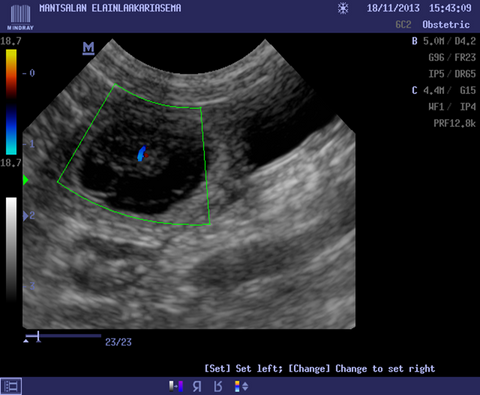There are vast differences between dog breeds. A Chihuahua can weigh as little as a kilogram where a Mastiff can bring the scales to almost one hundred kilograms. They look and act very differently but what are the similarities and differences between breeds when it comes to pregnancy and whelping? How is a gestation period for french bulldogs different of the golden retriever gestation period? Or are there any differences? In this guide, we will explore the dog pregnancy period in detail and investigate whether there are any notable differences between breeds. We'll pay particular attention to the Labrador Retriever and the German Shepherd, two popular breeds known for their unique characteristics and traits.
- Understanding the Dog Pregnancy Period
The dog pregnancy period, scientifically known as gestation, is a critical phase in a female dog's life. Typically, it lasts for approximately 63 days, although it can vary slightly depending on several factors. During this time, a dog's body undergoes significant changes to accommodate and nurture the growing puppies. While the basic timeline is consistent across all breeds, there can be subtle differences in how individual breeds experience pregnancy.
- Common Characteristics of Dog Pregnancy
Before we delve into breed-specific differences, let's outline some common characteristics of dog pregnancy:
-
Canine Gestation Period: As mentioned earlier, the average gestation period for dogs is around 63 days, but it can vary from 58 to 68 days.
-
Signs of Pregnancy: Dogs typically exhibit various signs of pregnancy, including changes in appetite, weight gain, enlarged nipples, and behavioural changes. It is a good idea to test for pregnancy at home after 28 days of pregnancy have passed.
-
Nutritional Needs: Pregnant dogs require a well-balanced and nutritious diet to support the developing puppies and ensure the mother's health.
-
Veterinary Care: Check-ups with a veterinarian are essential during pregnancy to monitor the health of both the mother and the puppies.
-
Whelping Preparation: Preparing a safe and comfortable environment for the mother to give birth is crucial. Make sure the space is calm, warm, and draught free. She must be able to be separated from other animals to ensure a safe and stress free labour. Soft and comfortable bedding, that is regularly changed should be provided.
- Labrador Pregnancy Period
Labrador Retrievers, known for their friendly and playful disposition, share many commonalities with other breeds during pregnancy. Their gestation period typically aligns with the standard 63-day timeline. However, there are a few factors specific to Labradors that are worth noting:
-
Litter Size: Labradors tend to have larger litters compared to some other breeds. This can impact the mother's nutritional needs and the space required for the puppies to develop. Make sure you have help available in case your female has a very large litter.
-
Nutrition: Labradors may require a carefully balanced diet with slightly increased caloric intake to support their larger litters. Quality commercial dog food and supplements should be considered.
-
Exercise: While exercise is essential for maintaining overall health, it's important to monitor and moderate exercise during pregnancy to prevent overexertion.
- German Shepherd Pregnancy Period
German Shepherds, known for their intelligence and versatility, also follow the standard 63-day gestation period. However, their unique characteristics can influence the pregnancy experience:
-
Litter Size: German Shepherds typically have moderately sized litters. This may result in differences in how the mother carries and cares for her puppies.
-
Nutrition: Due to their higher activity level and potential for larger puppies, German Shepherds may require a diet with slightly higher protein content. This helps support the mother's energy needs and the growth of robust puppies.
-
Exercise: German Shepherds are active dogs, and it's important to ensure they get the appropriate level of exercise during pregnancy without overexerting themselves.
- Differences Between Breeds During Pregnancy
While the fundamental aspects of the dog pregnancy period remain constant, there are subtle differences between breeds like Labradors and German Shepherds. These distinctions are primarily influenced by factors such as size, litter size, nutritional requirements, and activity levels.
-
Size: Larger breeds, including Labradors and German Shepherds, may have more spacious abdominal cavities, allowing for larger litters.
-
Litter Size: Labradors are known for having larger litters, often ranging from 6 to 8 puppies or more. German Shepherds typically have smaller litters, usually around 5 to 7 puppies.
-
Nutrition: Nutritional requirements during pregnancy can vary based on the breed's size and the number of puppies. Labradors might need a diet slightly higher in calories, while German Shepherds may require more protein due to their active nature.
-
Exercise: Monitoring exercise is crucial for both breeds, but German Shepherds' higher activity levels may necessitate more frequent supervision to prevent overexertion.
-
Health Considerations: Some breeds, including Labradors, may have specific health concerns, such as hip dysplasia. These conditions may require special attention during pregnancy.
Understanding these breed-specific differences is essential for providing optimal care during the dog pregnancy period, ensuring the health and well-being of both the mother and her puppies.
- Signs and Stages of Canine Pregnancy
To effectively manage a dog's pregnancy, it's essential to recognize the signs and stages of pregnancy. The gestation period is typically divided into three stages:
-
Stage 1 (0-3 Weeks): During this stage, there may not be noticeable physical changes. The fertilized eggs travel to the uterus for implantation.
-
Stage 2 (3-6 Weeks): As pregnancy progresses, the dog's abdomen may begin to show signs of swelling. Behavioral changes, such as increased appetite or nesting behavior, can also become apparent. At this stage it is recommended that a home pregnancy test is performed to determine pregnancy. Always seek the advice of a veterinarian if your dog is pregnant.
-
Stage 3 (6-9 Weeks): In the final weeks of pregnancy, the dog's abdomen will noticeably enlarge. She may start producing milk, and her behavior may become more restless as she prepares for labor.
Recognizing these stages and their associated signs is crucial for providing appropriate care and monitoring the progression of the pregnancy.
- Nutrition and Care During Dog Pregnancy
Proper nutrition and care play a significant role in ensuring a healthy pregnancy for your dog. Here are some essential tips:
-
High-Quality Diet: Provide a high-quality commercial dog food that meets the specific nutritional needs of a pregnant dog. Consult with your veterinarian for dietary recommendations tailored to your dog's breed and size. Make sure not to over or underfeed your female.
-
Supplements: Your vet may recommend supplements such as folic acid, calcium, and iron to support the health of the mother and her developing puppies.
-
Regular Veterinary Check-ups: Schedule regular check-ups with your veterinarian to monitor the progress of the pregnancy, address any concerns, and ensure the mother's health.
-
Exercise and Rest: Balance your dog's exercise with adequate rest to prevent exhaustion or strain.
-
Whelping Box: Prepare a safe and comfortable whelping box or area for the mother to give birth and care for her puppies.
- Preparing for Whelping
As the pregnancy nears its end, it's crucial to prepare for whelping, the process of giving birth to puppies. Ensure you have the following items ready:
-
Whelping Box: This should be a safe, quiet, and warm space where the mother can comfortably give birth and care for her puppies. Make sure it is separated from other animals and in a calm draught free space. Offer additional heat, vie heating lamps of pads if the room cannot be warmed enough.
-
Clean Bedding: Use clean and soft bedding materials like towels or blankets for the whelping box. Make sure they are safe for the puppies and don’t have strings or tags they can get caught in. Change the bedding daily or when needed.
-
Heating Pad or Heat Lamp: Maintain a stable and warm temperature in the whelping area, as newborn puppies are sensitive to cold and cannot regulated their body temperature.
-
Sterile Supplies: Have sterile scissors, clean towels, and dental floss on hand to assist with cutting umbilical cords if necessary.
- Emergency Vet Contact: Have the contact information for an emergency veterinarian readily available in case of complications.
In conclusion, understanding the dog pregnancy period is essential for providing the best care for your canine companion and her developing puppies. While the basic gestation period remains around 63 days for most breeds, subtle differences may exist, particularly in breeds like Labrador Retrievers and German Shepherds. These differences are primarily influenced by factors such as size, litter size, nutritional requirements, and activity levels.
Regardless of the breed, a healthy and well-managed pregnancy involves providing proper nutrition, regular veterinary care, appropriate exercise, and a comfortable whelping environment. By taking these steps and staying attuned to the unique needs of your dog, you can ensure a safe and successful pregnancy and the arrival of a healthy litter of puppies.
References:
. Kustritz, M. V. R. (2002). Reproductive behavior of small animals. Veterinary Clinics of North America: Small Animal Practice, 32(2), 267-284.
. Concannon, P. W., & Hansel, W. (1978). Canine pregnancy: Predicting the time of parturition and puppies' birth weights from the day of the LH surge and litter size. Theriogenology, 9(2-3), 125-138.
. Romagnoli, S., & Wheeler, S. (2009). Normal canine pregnancy. Theriogenology, 71(3), 402-413.
. Root Kustritz, M. V. (2005). Collection of cervical mucus and cytologic examination of vaginal smears. Clinical Techniques in Small Animal Practice, 20(4), 175-182.




